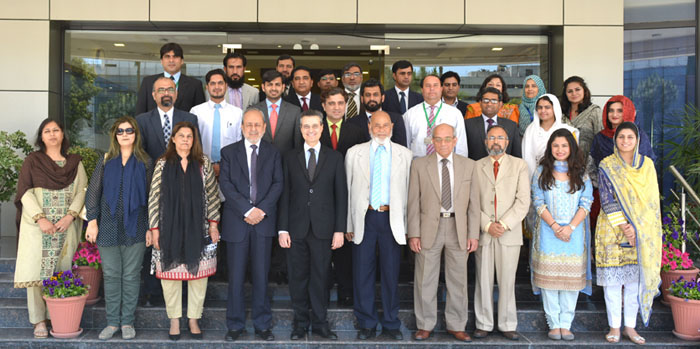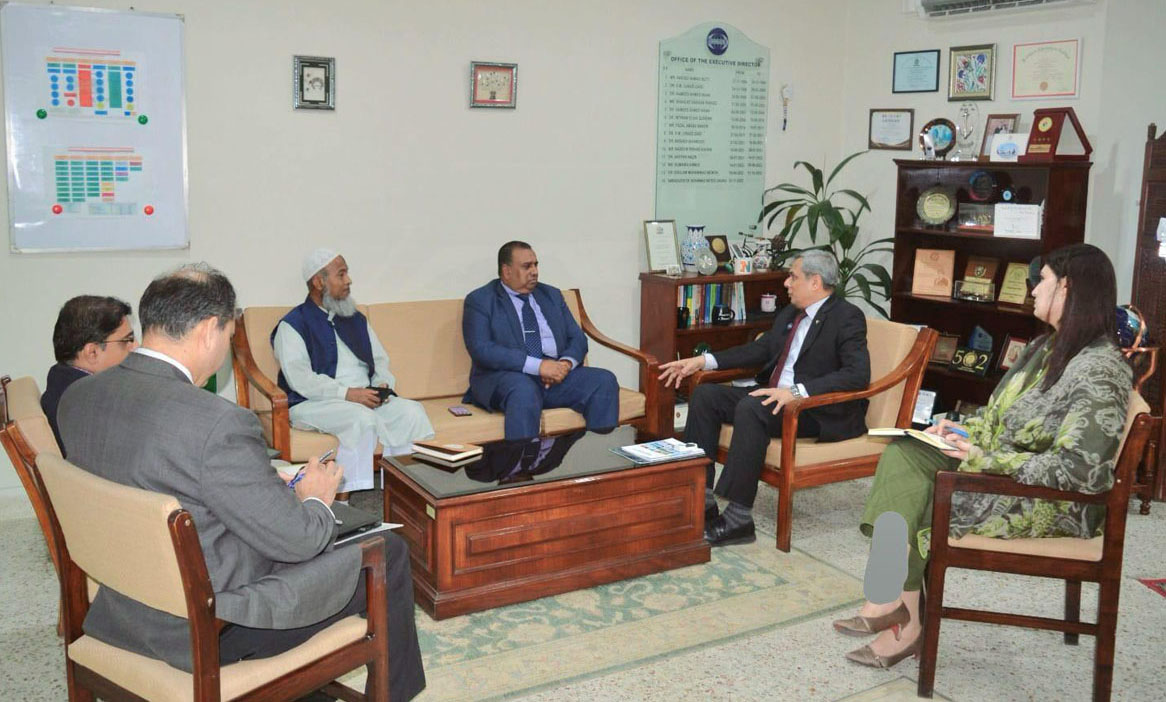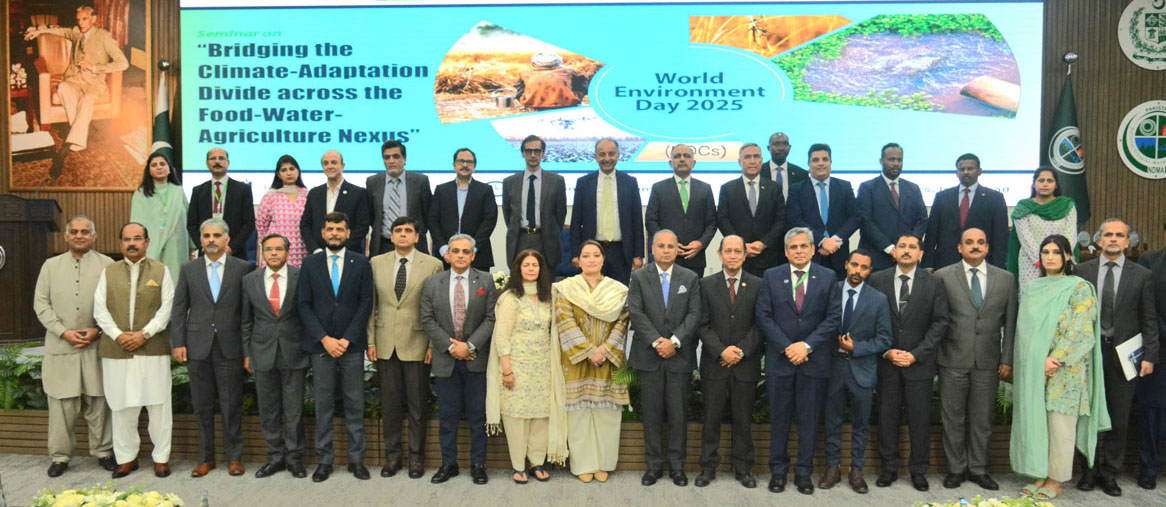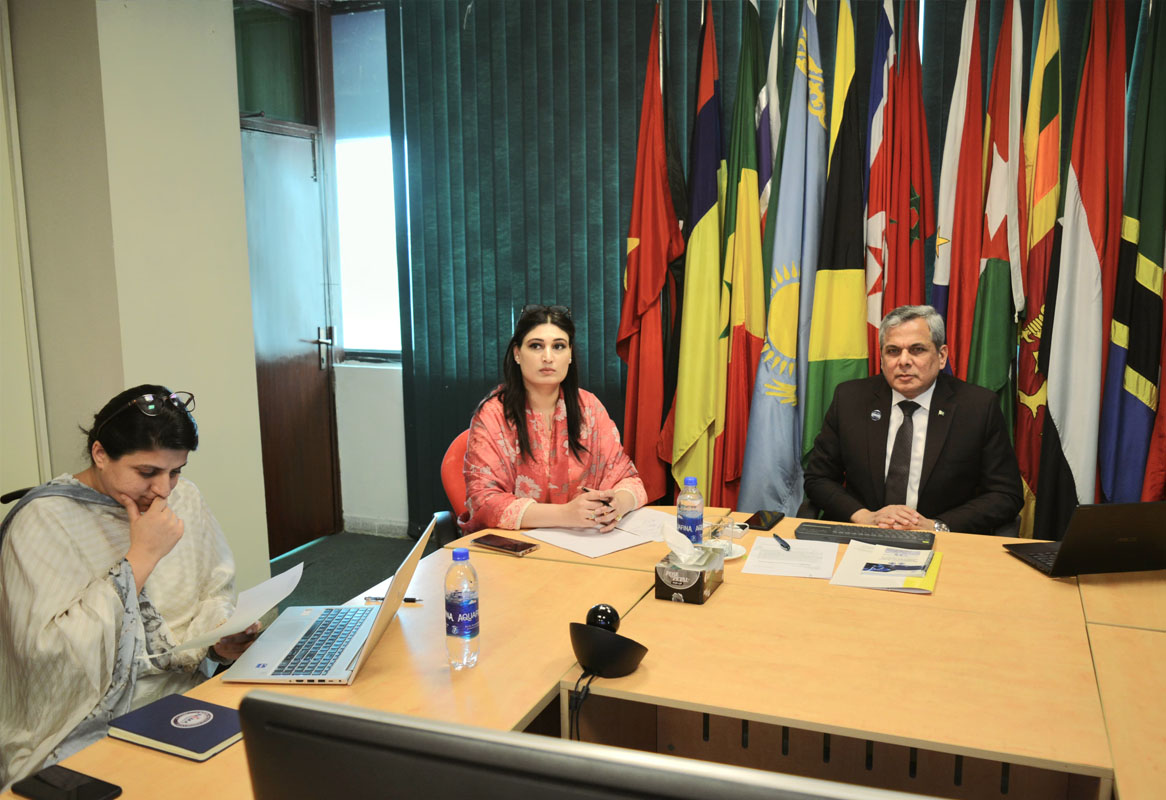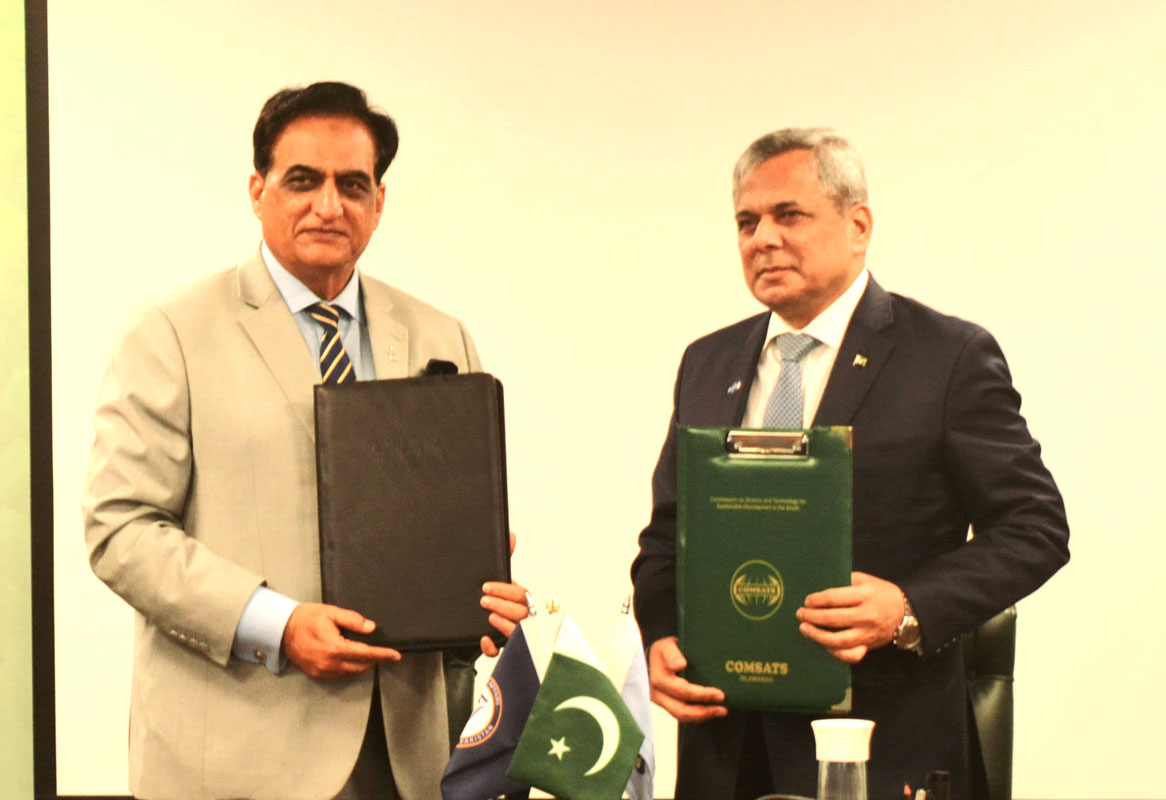His Excellency Claudio Raja Gabaglia Lins, Ambassador of Brazil in Islamabad, visited COMSATS Secretariat, on April 12, 2017. The Ambassador was received by the Executive Director COMSATS, Dr. S.M. Junaid Zaidi, and senior officials of COMSATS. During this good will visit, H.E. Mr. Lins also delivered a lecture on ‘Pak-Brazil Relations’ that was attended by officials of COMSATS Secretariat, and CIIT.
In his opening remarks before the lecture, Dr. Zaidi welcomed the honorable ambassador and noted the excellent relations of COMSATS with its Brazilian Centres of Excellence, Embrapa Agrobiologia. Based on this experience, he showed his desire to have more of similar synergies in the South and the North. He underscored the social and cultural strengths of Brazil and also noted the country’s contribution to Science and Technology. He also pointed out the commonalities between COMSATS Member States, such as sugarcane production in Pakistan and Brazil. He hoped to capitalize on these common strengths and looked forward to more cordial and productive relations between COMSATS’ Network members.
 |
 |
In his lecture, the honorable Ambassador highlighted the commonalities of challenges and strength between Pakistan and Brazil, such as cultural and religious diversity, academic standing, quality of research, traditions, as well as social, economic and political problems. He noted that the diversity of Brazil is due to the amalgamation of European, Portuguese, African, and Arab cultures, which has rendered the society more tolerant, hospitable, sympathetic, and open-minded. Brazilians are a happy people, who love music, dance and socializing, and share a lot of values of other developing countries due to its peaceful foreign policy. The country has remained by and large fortunate to not having any frontier problems and has been able to resolve its national and regional conflicts peacefully.
In the wake of the growing agro-business of Brazil, the Ambassador shar >e the growing concerns of environmental protections, as he considered it Brazil’s duty to protect environment, especially the Amazon. This, he noted, is a difficult task given the variant political interests. Brazil, he noted is in transition, politically and economically, owing to its fight against corruption and recovery from recession. He considered both as positive indicators for Brazil, complemented by good performance by Brazilian institutions, being spearheaded by new generation. The good changes are motivated by the country’s growing wish for change and accountability, Mr. Lins noted. Despite the optimism, he considered it a continuous struggle and believed Brazil still has a long way to go.
>e the growing concerns of environmental protections, as he considered it Brazil’s duty to protect environment, especially the Amazon. This, he noted, is a difficult task given the variant political interests. Brazil, he noted is in transition, politically and economically, owing to its fight against corruption and recovery from recession. He considered both as positive indicators for Brazil, complemented by good performance by Brazilian institutions, being spearheaded by new generation. The good changes are motivated by the country’s growing wish for change and accountability, Mr. Lins noted. Despite the optimism, he considered it a continuous struggle and believed Brazil still has a long way to go.
In his presentation, he shared the history, geography, demographics, and socio-cultural dynamics of Brazil. He noted that Brazil is the 9th largest economy in the World and has highest GDP in Latin America. He informed that EMBRAPA is undertaking very interesting work of both practical and theoretical significance. Research at its Agrobiology centre, he further informed, is helping to increase agricultural productivity, as well as research capacity of Brazilian scientists in related fields. The sustainable agriculture research made Brazil the largest producer of coffee, soya bean, sugarcane and oranges. He also shared information on Pak-Brazil trade, among other things.
The Brazilian Ambassador noted that his country’s R&D has gained a lot of prominence internationally during the last few decades. Sharing some statistics, in this regard, he apprised that Brazil has 2,300 higher education institutions, produced 16,700 Ph.D and Brazilian scientists published 40,500 papers during 2016. He showed a keen desire to increase research exchanges between Pakistan and Brazil.
At the end of his informative presentation, the Ambassador responded to a number of questions from the audience that related to BRICS block, education sector of Brazil, cultural and academic exchanges, and common socio-political.
Ambassador Fauzia Nasreen concluded the session with a note of thanks and also underscored some key points of the lecture and subsequent interactions.


